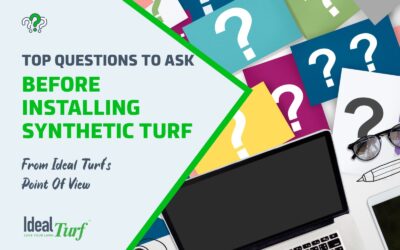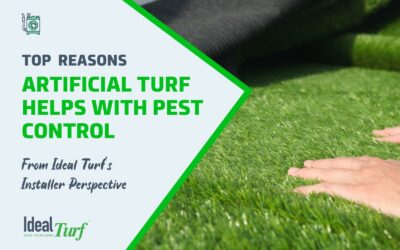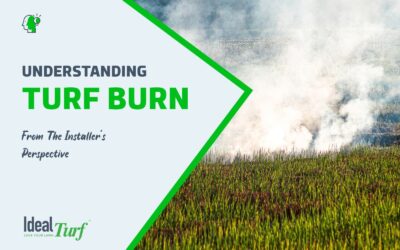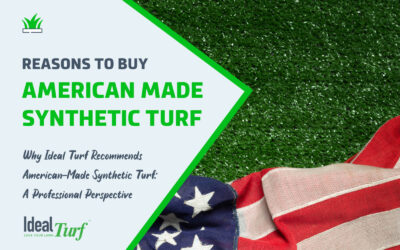The Best Fake Grass for Yards: A Complete Lawn & Landscape Turf Buying Guide

So you know you want all the time- and money-saving benefits of artificial grass for your yard.
No more mowing, weeding, or edging for you!
But how do you choose which turf product is the best fake grass for yards?
If you’ve even glanced at all the choices of type, quality, and materials of artificial grass that are available, the experience may leave you feeling a bit overwhelmed.
But don’t throw up your hands and dig out your lawnmower just yet.
In this article, we’ll explain some of the industry terms and specifications associated with fake grass.
This knowledge will demystify the process of choosing the best artificial grass for your yard.
By knowing a little about how fake grass is made and the differences in quality between products, you’ll know which features you should pay for, as well as those you can skip out on to save some money on your synthetic grass lawn installation.
This article will equip you with the knowledge you need to select the best fake grass for yards with confidence.

How To Choose the Best Fake Grass for Yards
A beautiful, lush aesthetic is just one of the many reasons for the growing popularity of artificial grass for lawns and landscapes in Texas and the surrounding areas.
Modern turf products look extremely realistic — so much so that unless you are very close, you’re unlikely to notice the difference between high-quality synthetic grass and the real thing.
Recent improvements in manufacturing and technology have resulted in this natural look.
Manufacturers include different shapes, colors, and textures of grass fibers to imitate the old, dead grass underneath as well as the new, young blades on the top.
Modern synthetic grass offers a beautiful, eco-friendly alternative to natural grass lawns.
Below, we provide a guide to empower homeowners with the detailed knowledge to evaluate and choose the best fake grass for their lawns and landscapes.

1. Learn Turf Terminology
Knowing a few industry terms will help you navigate all the choices you have between features and turf products.
While the list below isn’t exhaustive, it will cover the major specifications you’ll see that distinguish artificial grass options from each other.

Yarn
Artificial grass is constructed similar to carpet — many short threads of yarn sewn to a backing and cut into large rolls.
The yarn is the “threads” used to make the grass blades and it is composed of one of three types of material:
- Polyethylene – This fiber is the most commonly used and looks and behaves the most like real grass. It does not absorb water and is resistant to pet odors. However, it has a low melting point (248 – 266 F°) and is susceptible to damage from the sun. Look for a product with UV stabilizers to mitigate this problem.
- Polypropylene – This material is the thinnest and softest, although the thinner fibers don’t hold up to high traffic at tall pile heights as well as the other materials do. Like polyethylene, it’s also moisture resistant. It’s also the least expensive material available. A quality polypropylene product will also have UV stabilizers.
- Nylon – This is the springiest, most sun-resistant material available, but it’s also the priciest. It’s perfect for high-traffic areas and requires the least maintenance. However, it absorbs more liquid than the other materials, making it prone to staining and odors from pet urine. It can also cause “turf burn” injuries because it’s more stiff than other materials.
Each material is best for a different set of applications, so talk with an artificial grass specialist about your unique needs for your lawn.

Fibers & Thatch
The fibers are the individual grass blades that make up the artificial turf products.
They come in different colors, thicknesses, and shapes to mirror the specific grass species found in natural lawns.
In high-quality turf products, the stiff, green fibers are complemented by a layer of thatch — curled, yellow or brown threads that look just like the dead grass that accumulates in a real lawn.
This not only adds to the realistic look of the synthetic grass installation, but it also provides that springy, cushiony feeling we know and love about having grass beneath our bare feet.

Density
This refers to how many grass blades per square inch a turf product has.
The more densely packed the fibers are, the higher quality and more durable the turf product.

Pile Height
This is how tall the green grass fibers stand.
Different pile heights are best suited to particular purposes.
For instance, if you want a lush, green front lawn, choose an artificial grass variety with a tall pile height to give your landscape a beautiful look.
If your backyard sees a lot of traffic from dogs or kids running around, a shorter pile height will withstand the abuse much better without the need for constant fluffing and brushing.

Face Weight
Face weight is how much material is used to make the turf product. It’s usually expressed as ounces of material per square yard of turf.
Just as thicker fabrics are generally higher in quality, artificial grass with a high face weight also tends to be of high quality.
Face weight refers only to the yarn and thatch, not the weight of the backing material.

Turf Backing
Artificial grass has two types of backing: primary and secondary.
The primary backing is made of woven polypropylene.
The fibers are tied or woven into the tufts that stick out on one side to form the grass.
This backing shouldn’t stretch, as that would cause buckling or shifting once the grass was installed.
The secondary backing is also called the coating.
It goes on the underside of the synthetic turf and seals the grass fibers into the fabric.
The back weight is the combined weights of the primary and secondary backing materials.
High-quality artificial grass will have a back weight above 25 oz. per yard.
Backings of this strength will stay in place, even under heavy traffic.

Turf Drainage
The quality of the backing is also affected by how well the turf drains away liquid.
For fake grass lawns, the most common type of drainage is a hole-punched or perforated backing.
This drains water away well enough to take care of the occasional rainstorm.
However, if you live in a wet climate or you have a dog that does its business on the artificial grass regularly, you’ll want a 100% permeable (or non-perforated) backing for maximum efficiency in drainage.
We’ve introduced a proprietary backing that’s a hybrid of the two that we call DUAL FLOW backing, which means it’s fully permeable and hole-punched.
Punching holes in a fully permeable backing may seem counterintuitive, but the drainage holes actually allow solids to penetrate the turf better.
This is particularly advantageous with pets, because any solid waste that’s missed when you clean the turf will make its way to the drainage holes in the turf backing.

Base Layer or “Sub-Base”
While it is possible to install artificial turf directly on the soil, it will result in dimples and wrinkles forming in the turf.
This is caused by the soil expanding and contracting during wet and dry seasons.
So while it’s not an official part of your artificial grass, having a good sub-base is critical to a quality turf installation.
The sub-base is a layer of compacted sand, decomposed granite, river rocks, and gravel beneath the artificial grass.
It acts as the foundation for your synthetic turf and needs to consist of the right materials to ensure proper drainage.
We recommend and install no less than 3” of Class II Road Base on every artificial grass installation we complete.
Class II Road Base is a combination of larger and smaller crushed and decomposed granite, ensuring the best drainage possible.
As a general rule of thumb, the thinker the base material, the better the drainage.

Infill Material
Although it often goes unnoticed, infill plays a vital role in any artificial grass installation.
Infill consists of small particles spread across the turf surface.
We prefer using rounded silica sand infill, a non-toxic and natural option that is safe for both children and pets.
It helps anchor the turf in place, prevents shifting, and supports the grass blades to keep them upright and reduce matting.
Infill also provides cushioning underfoot, enhancing comfort and giving the turf a more natural feel.

Antimicrobial Additives
Some of our turf products feature antimicrobial (antibacterial) additives that are infused with the backing during the manufacturing process.
The antimicrobial backing found on Ideal Turf’s artificial grass products called “Microbe Safe™” helps prevent the buildup of odors from pet urine, as well as germs and bacteria.
This is a boon for both parents and pet owners.

UV Protection / UV-Stabilized
Certain types of artificial grass fibers are prone to become faded and/or brittle with prolonged sun exposure.
However, some artificial grass has built-in resistance to ultraviolet (UV) light.
Think of it as sunscreen for your fake grass.
UV protection keeps artificial grass from fading in the sun and prevents its backing from breaking down and allowing grass fibers to come out.
This feature will prolong the life and beauty of your artificial grass.

2. Determine Your Needs and Preferences
You know your yard better than anyone.
Before you go about choosing between pile heights and infill options, take a step back and ask yourself what you want and need out of your artificial grass installation.
Is it important that your grass match your neighbors?
Do you have pets, children, or guests that present a heavy load of foot traffic to contend with?
Think about any problems your lawn has, such as low spots with standing water or divots.
You won’t know what artificial grass product or features will suit you best until you assess the needs of your yard.
While you consider these things, be sure to review these important aspects of an artificial grass installation.

Foot Traffic
Different turf products are designed to withstand different levels of foot traffic or usage.
Do you have children that will be running and playing on the turf?
Do you have a dog?
Multiple dogs?
How active are they and how large?
All of these factors will play into the type of artificial turf you need in your yard.

Resilient & Springy Fibers
If you want a soft cushion of grass between your bare toes, opt for a high-quality product.
Springy and resilient turf fibers will resist laying flat and will return to an upright position when you walk across them.
This feature comes from the shape, density, material, and quality of the grass fibers, along with the type of infill that’s used.

Durable & Long-Lasting
The materials used in making artificial turf are extremely durable and can last up to 25 years if properly cared for.
Some aspects that help your artificial grass stay gorgeous longer are UV stabilizers to protect from sun damage, high-quality infill, and good drainage.
Proper turf maintenance (like raking away debris, as well as periodic rinsing and brushing) will help keep your fake grass looking great.

Realistic & Natural-Looking Aesthetics
Just because you want artificial grass in your yard doesn’t mean you want it to look fake!
Choosing a high-quality product that matches the color and shape of the neighbor’s grass will give your yard a natural, just-mowed look without you having to lift a finger.
For a lush, full lawn, choose artificial grass with medium to long pile height with some thatch and a good infill to give the blades a boost.
This will help your grass resist matting in high-traffic areas.
To keep your artificial lawn looking its best, use a power broom or a turf rake to fluff the grass fibers at least once or twice per year.
Drains Water & Pet Urine
If your yard has low spots that are prone to standing water, it’s essential to choose a turf with a quality turf drainage system.
If your artificial grass doesn’t drain away water quickly enough, mold and mildew can form on the yarn or backing.
Once these problems form, they are extremely difficult to remove.
If you have pets that do their business on your fake grass, you’ll need to hose it off a few times per week.
Without adequate drainage, pet urine and the accompanying bacteria can build up on your artificial grass, causing unpleasant odors.
All of these issues are mitigated by choosing a turf product with a good drainage system.

Trustworthy & Reliable Installer of Fake Grass for Yards
Choosing a reputable and trustworthy artificial grass installation company to install your yard is just as important as the type of turf you choose.
What good is high-quality, realistic artificial grass if it has an obvious seam running down the middle, a spot that comes loose, or wrinkles?
An installation by an inexperienced team can result in a host of artificial grass problems.
A reliable turf company should be willing to provide you with all the information you want about their turf products and installation process.
Ask your turf installer about how much experience the installation team has, as well as whether or not the team is in-house.
Some artificial grass companies hire independent contractors who may not be experienced enough for a high-quality installation.

3. Compare Features of Lawn & Landscape Turf Products
Now that you know about the features and options offered by various artificial grass products as well as the needs of your own yard, make a list of what you want in the turf that’s installed in your yard.
Do you need a heavy back weight and a short pile height to withstand heavy foot traffic?
Do you need a fully permeable backing, or will a hole-punched product do the trick?
Once you have divided this list of features into must-haves and nice-to-haves, you are ready to shop for artificial turf.
You can start this search online, then you can visit a showroom or schedule a time to meet with a turf design and installation consultant.
Our sales consultants will bring a box of turf product samples so you can see and feel the turf products in person to determine which variety is right for your lawn.

4. Costs, Budget & Financing
It’s true that installing artificial grass represents a hefty upfront cost.
But if you’re suffering from sticker shock, it’s important to see the big picture and factor your future cost savings into the price.
Once you switch to artificial grass, you’ll no longer need to water, mow, weed, or fertilize your grass.
This savings represents hundreds if not thousands of dollars per year (not to mention the time savings).
You’ll also increase your home’s value and curb appeal.
Depending on how much money you spend watering and caring for your lawn, you can plan on seeing a return on your artificial grass investment in 2 – 7 years, and most of our turf products have a 20-year warranty.
If you’re considering artificial grass but aren’t sure about the cost, we offer financing options you can explore.

How Much Does Fake Grass for Yards Cost?
If you know the square footage of your lawn, you can easily estimate the approximate cost of your project.
(Not sure how big your lawn is? Check out our guide on how to measure for artificial grass.)
Yes, fake grass will certainly cost more upfront than seeding or sodding a lawn.
However, the overall cost savings over the life of the lawn outweighs the initial monetary investment.

Our Top Picks of the Best Fake Grass for Yards
Each artificial grass product is best-suited to a different application and set of circumstances — but that doesn’t mean we don’t have a few favorites.
Here are our top picks of the best fake grass for yards.

Ascot 101
Ascot 101 features a medium pile height of 1.875” — long enough to look luscious on the lawn but short enough to withstand foot traffic.
Its MicrobeSafe™antimicrobial backing and top-of-the-line DUAL FLOW drainage system make it ideal for homeowners with pets.
The Ascot 101 is also a great choice for yards in wet climates or that have spots that are prone to standing water.
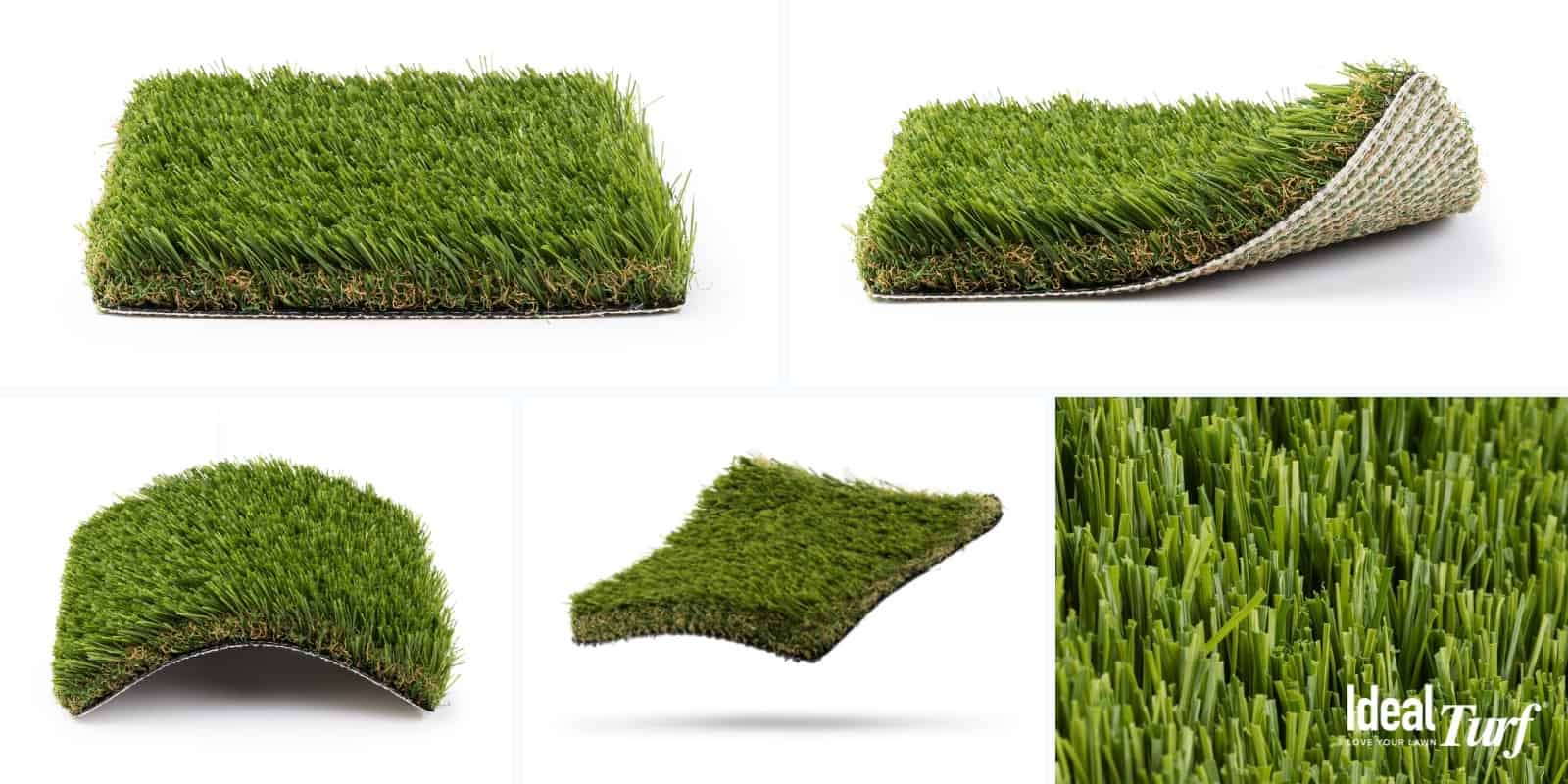
Preston 93
Preston 93 also features DUAL FLOW backing and stellar drainage.
It features an extremely realistic blend of vibrant green blades and tan thatch that perfectly mimics a fresh-cut summer lawn.
Similar to the Rio-Grande 101, it has a medium pile height of 1.75”.
It’s backed by a 20-year warranty so you’ll enjoy a beautiful, low-maintenance yard for years to come.

Wrapping up the Best Fake Grass for Yards Buying Guide
Now that you’re familiar with the distinguishing features of the various artificial grass products, you’re ready to shop for the best one for your lawn or landscape.
The next step is to review your list of wants and needs with a turf design and installation specialist to narrow down your selection to a few turf products that will meet your needs.
If you want to browse online a little before your appointment, check out our popular artificial grass products.
To set up an appointment for an artificial grass installation in Texas or Oklahoma, please contact Ideal Turf today!
Get your FREE artificial grass design and installation estimate by clicking the “GET A QUOTE” button or feel free to give us a call at 800-204-4650.
Author: Tim Taylor
Recent Posts
- How Synthetic Turf Helps Keep Fleas and Ticks Out of Your Texas and Oklahoma Yard
- Porches, Patios & Personality: Creating Outdoor Spaces Texans Love
- Turn Your Backyard into a Golfer’s Dream: Custom Putting Greens by Ideal Turf
- Why Texas Pet Owners Are Choosing Pet-Friendly Artificial Grass from Ideal Turf
- Why More Texans and Oklahomans Are Turning to Artificial Grass for a Greener Future
